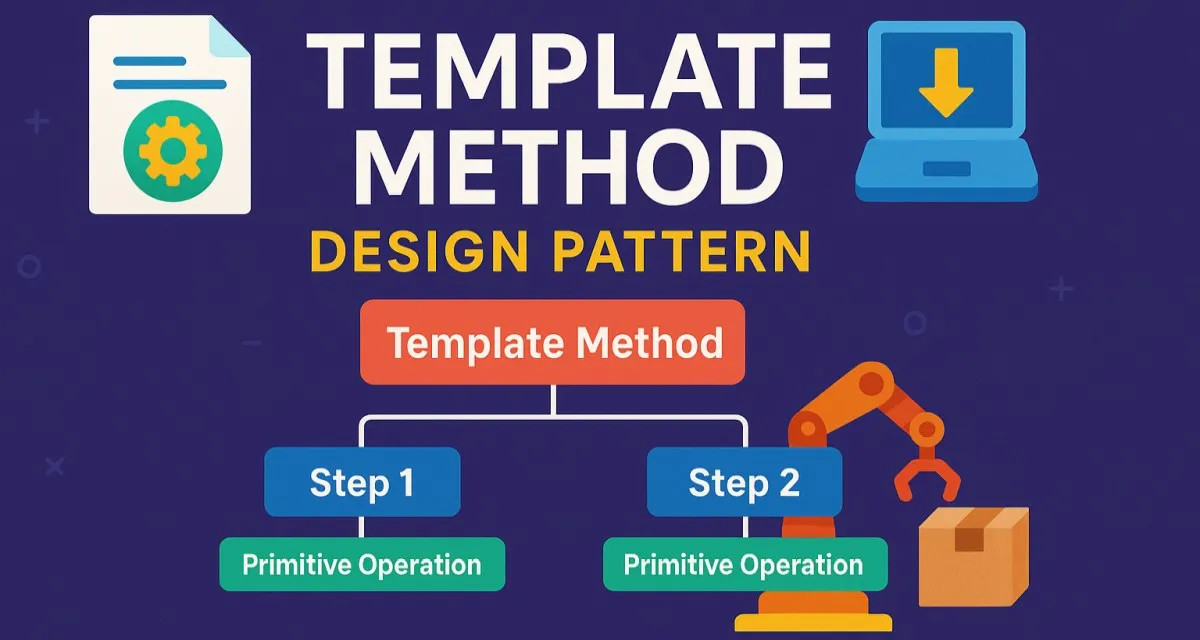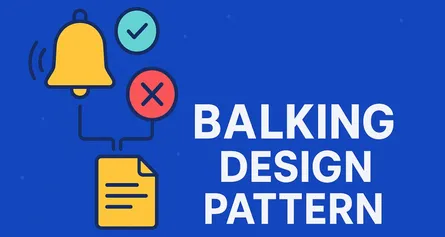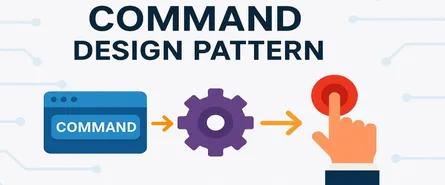
Template Method Design Pattern in C#: A Deep Dive for Software Architects
What is the Template Method Design Pattern?
Imagine you’re baking a cake. You always follow the same basic steps: mix the ingredients, bake the cake, and then decorate it. Sure, the flavors might change—sometimes chocolate, sometimes vanilla—but the structure? The process? It stays the same.
That’s the Template Method Design Pattern in a nutshell.
It’s like the “recipe” for an algorithm where the skeleton of the operation is fixed, but some of the actual steps can be changed or customized by subclasses.
In super-nerdy terms, the Template Method Pattern defines the program skeleton of an algorithm in a method, deferring some steps to subclasses without changing the overall structure.
In short:
It sets up how the steps fit together but lets subclasses fill in the blanks.
Principles Behind the Template Method Pattern
The Template Method rides on a couple of core object-oriented programming principles:
- Inversion of Control (IoC): Instead of telling subclasses what to do, the superclass just says “Hey, I’ll call you when I need you.”
- Hollywood Principle: “Don’t call us, we’ll call you.” The template method (the one in the superclass) controls the flow and just calls the subclass methods when necessary.
- Code Reuse: The common logic is in the base class. Specific details live in the subclasses. Less duplication. Cleaner code.
Think of it like a Broadway play director who directs the entire show but lets each actor perform their own parts.
When Should You Use the Template Method Pattern?
Here’s when you know it’s time to pull the Template Method out of your toolbox:
- You have multiple classes that share the same structure of operations but differ in small steps.
- You want to avoid duplicating code that does mostly the same thing.
- You need a way to control the sequence of operations but allow some parts to vary.
- You want to ensure consistency across different implementations.
Picture a sports tournament:
The flow (game setup → play game → announce winner) is always the same. But the rules change depending on whether it’s basketball, soccer, or quidditch .
Key Components of the Template Method Pattern
Let’s break it down piece by piece:
| Component | Description |
|---|---|
| Abstract Class | Defines the template method and declares abstract steps to be implemented by subclasses. |
| Template Method | The method that defines the sequence of steps. Calls abstract operations where necessary. |
| Primitive Operations | The customizable steps—left as abstract or virtual so subclasses can override them. |
| Concrete Class | Implements the abstract steps with its own specific behavior. |
If this sounds like building a custom burger at a fast-food joint—you’re right!
The chef follows the same process: bun patty toppings wrap.
But you (the subclass) get to pick if you want beef, chicken, or a veggie patty.
Detailed C# Example of Template Method Pattern
Let’s not just talk theory—let’s get our hands dirty with a real-world, battle-tested C# implementation. ️
Scenario: Document Exporting
You’re designing a system that exports documents into different formats like PDF, Word, and HTML.
The export process has the same general structure but format-specific differences.
Step 1: Abstract Base Class
using System;
abstract class DocumentExporter
{
// Template Method
public void Export()
{
OpenDocument();
ParseContent();
ConvertToFormat();
SaveDocument();
}
protected void OpenDocument()
{
Console.WriteLine("Opening document...");
}
protected abstract void ParseContent();
protected abstract void ConvertToFormat();
protected void SaveDocument()
{
Console.WriteLine("Saving document to disk...");
}
}What’s happening here?
Export()defines the skeleton: open parse convert save.ParseContent()andConvertToFormat()are left abstract. Subclasses must implement them.
Step 2: Concrete Implementations
PDF Exporter
class PdfExporter : DocumentExporter
{
protected override void ParseContent()
{
Console.WriteLine("Parsing content for PDF...");
}
protected override void ConvertToFormat()
{
Console.WriteLine("Converting content to PDF format...");
}
}Word Exporter
class WordExporter : DocumentExporter
{
protected override void ParseContent()
{
Console.WriteLine("Parsing content for Word...");
}
protected override void ConvertToFormat()
{
Console.WriteLine("Converting content to Word format...");
}
}HTML Exporter
class HtmlExporter : DocumentExporter
{
protected override void ParseContent()
{
Console.WriteLine("Parsing content for HTML...");
}
protected override void ConvertToFormat()
{
Console.WriteLine("Converting content to HTML format...");
}
}Step 3: Using the Template Method
class Program
{
static void Main(string[] args)
{
DocumentExporter pdfExporter = new PdfExporter();
DocumentExporter wordExporter = new WordExporter();
DocumentExporter htmlExporter = new HtmlExporter();
Console.WriteLine("Exporting PDF:");
pdfExporter.Export();
Console.WriteLine("\nExporting Word:");
wordExporter.Export();
Console.WriteLine("\nExporting HTML:");
htmlExporter.Export();
}
}Output:
Exporting PDF:
Opening document...
Parsing content for PDF...
Converting content to PDF format...
Saving document to disk...
Exporting Word:
Opening document...
Parsing content for Word...
Converting content to Word format...
Saving document to disk...
Exporting HTML:
Opening document...
Parsing content for HTML...
Converting content to HTML format...
Saving document to disk...Let’s Break That Down
- The
Export()method ensures that the export flow is always consistent. - Subclasses only focus on what’s different—how they parse and format content.
- This keeps your code clean, DRY (Don’t Repeat Yourself), and flexible.
It’s like writing the playbook for a football team: the game plan is fixed, but individual players have different moves.
Template Method Best Practices and Tips
Use protected methods for steps you don’t want subclasses to mess with.
Allow overriding hooks for optional steps (using virtual methods).
Keep the template method public so it can be called, but the detailed steps internal.
Different Ways to Implement the Template Method Pattern (with C# Examples)
Alright, now you might be thinking, “Is there just ONE way to implement this?”
Good news: you’ve got options!
Let’s look at the two main styles:
1. Abstract Classes (Classic Style)
We already saw this earlier:
- Define the skeleton in an abstract base class.
- Leave customizable parts as abstract or virtual methods.
Quick Refresher Example:
abstract class ReportGenerator
{
public void Generate()
{
FetchData();
AnalyzeData();
ExportReport();
}
protected abstract void FetchData();
protected abstract void AnalyzeData();
protected abstract void ExportReport();
}Subclasses (like SalesReportGenerator, InventoryReportGenerator) fill in the blanks.
2. Interfaces + Default Implementation (Modern C# Style)
Starting from C# 8.0, interfaces can now have default method implementations.
This means you can fake a kind of template method even without needing an abstract class.
Example:
interface IReportGenerator
{
void FetchData();
void AnalyzeData();
void ExportReport();
// Default method = template
void Generate()
{
FetchData();
AnalyzeData();
ExportReport();
}
}Usage:
class FinancialReport : IReportGenerator
{
public void FetchData() => Console.WriteLine("Fetching financial data...");
public void AnalyzeData() => Console.WriteLine("Analyzing financial data...");
public void ExportReport() => Console.WriteLine("Exporting financial report...");
}This is great when you want more flexibility without the strict inheritance chain.
When to Choose Which?
| Abstract Class | Interface with Default Method |
|---|---|
| When you need shared fields or states | When you only need shared method structure |
| Good for richer base functionality | Good for lightweight and flexible structures |
| Traditional OOP style | Modern, more composition-friendly |
Use Cases for Template Method Pattern
Where does this pattern shine like a diamond ? Here are some real-world scenarios:
- Document creation (PDF, Word, Excel exporters)
- Game development (Game rounds, player turns, AI behaviors)
- Data processing pipelines (Different file formats needing the same process)
- Testing frameworks (Setup Execute Test Tear down)
- Web page rendering engines (Prepare page Render content Serve HTML)
If you’ve ever built anything that needed a “do this, then that, then this other thing” structure across multiple objects, you’ve already bumped into the need for Template Method.
Anti-Patterns to Avoid with Template Method
Hold up! Before you unleash this pattern everywhere like a kid with a new toy , let’s talk mistakes.
Here’s how NOT to use Template Method:
1. Too Rigid Template
If your skeleton is SO strict that subclasses can’t do what they need to, you’re suffocating flexibility.
Tip: Leave room for optional hooks (like virtual methods) that can be overridden if needed.
2. Deep Inheritance Trees
If you start stacking classes like pancakes (BaseClass SubClass SubSubClass), you’ll create a nightmare to maintain.
Tip: Keep inheritance levels shallow (preferably just one level of subclasses).
3. Violating Single Responsibility Principle
If your abstract class tries to manage 50 different things, it becomes a tangled mess.
Tip: One clear purpose per template. Keep it tight and focused.
Advantages of Template Method Pattern
This pattern isn’t popular for nothing! Here’s why you’ll love it:
| Advantage | Explanation |
|---|---|
| Code reuse | Common algorithm structure is reused without duplication. |
| Enforced structure | Subclasses can’t mess with the overall workflow. |
| Flexibility | Specific steps can be customized as needed. |
| Inversion of control | Base class controls the sequence; subclasses control the details. |
| Consistency | Algorithms behave consistently across subclasses. |
It’s like building an IKEA bookshelf—everybody assembles the same shelf, but you can paint it any color you want!
Disadvantages of Template Method Pattern
Okay, no free lunch here. Template Method isn’t perfect either.
| Disadvantage | Explanation |
|---|---|
| Tight coupling | Subclasses are tightly coupled to the base class. |
| Fragility | Changes in the base class can ripple into all subclasses. |
| Inheritance limitations | C# only supports single inheritance—you might be boxed into one hierarchy. |
| Overhead | Sometimes using a strategy pattern or delegation is cleaner and more flexible. |
Bottom line:
If you don’t NEED to enforce the skeleton… don’t force it.
Another Look at Anti-Patterns (Because it’s THAT Important)
Yes, it’s worth repeating.
Copy-pasting template logic into subclasses
Allowing subclasses to override the full template method (use sealed if necessary)
Making “hooks” mandatory when they should be optional
Template Method is all about structure + flexibility, not structure + chaos.
Conclusion: Should You Use Template Method Pattern?
Absolutely… when the shoe fits.
The Template Method pattern is like writing a playbook for your application:
- You control the flow.
- You let the players improvise their moves.
- You guarantee a consistent and reliable final performance.
But, if you misuse it?
You’ll end up with a rigid, messy, over-inherited, unmaintainable codebase that’s about as much fun as debugging spaghetti code at midnight.
Use Template Method when:
- Multiple classes share a common process structure.
- You want to enforce a consistent workflow.
- You want to give subclasses some freedom without chaos.
Don’t use it when:
- Flexibility and dynamic behavior are your top priorities.
- You risk creating deep inheritance hierarchies.
Done right, the Template Method Pattern will make your architecture more elegant, more maintainable, and way more future-proof.
Share this article
Help others discover this content
About Sudhir mangla
Content creator and writer passionate about sharing knowledge and insights.
View all articles by Sudhir mangla →




